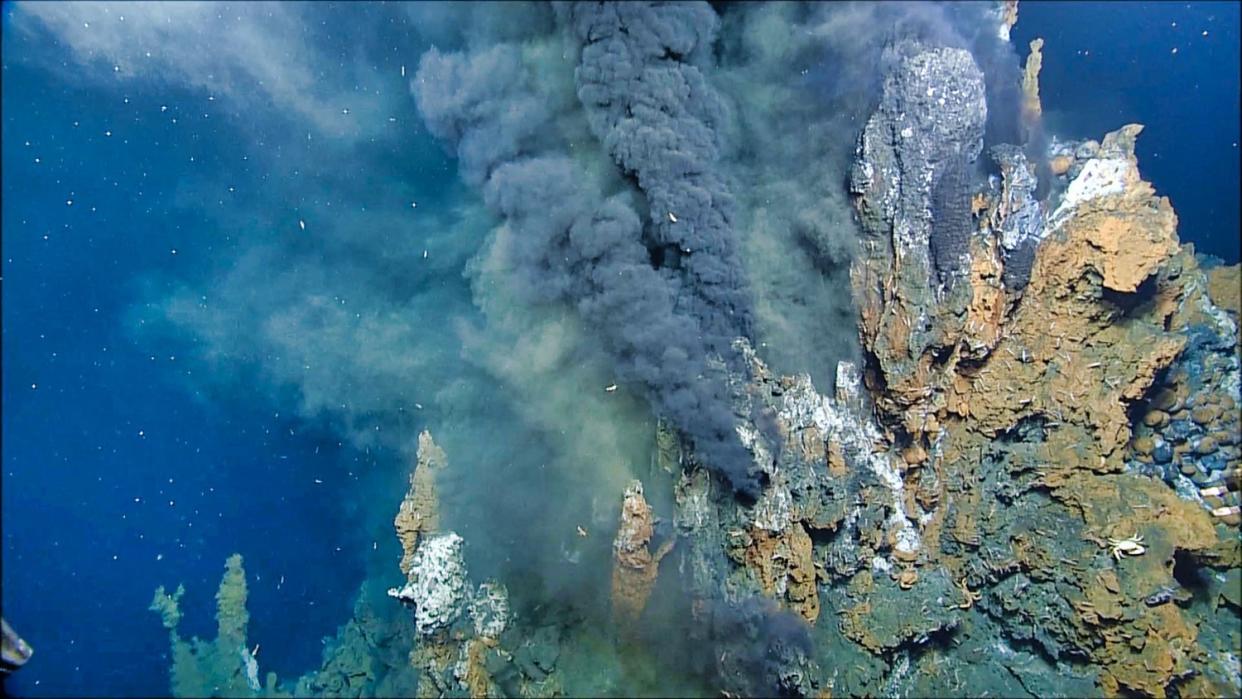What energy source sparked the evolution of life?

Biologists aren't in full agreement about exactly where the first life on Earth appeared. It might have evolved at the bottom of the ocean, in shallow rock pools or from building blocks delivered by asteroid impacts — or maybe all of the above. We do know that all life on Earth needs water to survive, so life likely first evolved there. But water alone isn't enough to spark life; it also needs energy.
Today, most living things get their energy from metabolizing sugars, but those molecules didn't exist 3.7 billion years ago, when life first evolved.
So what energy sources were available to help Earth's first inhabitants appear?
Related: What makes Earth so perfect for life?
During the Hadean eon (about 4.6 billion to 4 billion years ago), Earth was largely an ocean world, with the occasional volcanic island poking out of the water. One theory about the origin of life is that ultraviolet (UV) radiation from the sun helped to create complex molecules in shallow rock pools on volcanic islands, said Eloi Camprubi-Casas, a biologist who studies the origin of life at The University of Texas Rio Grande Valley.
"UV [radiation] is great because it's so energetic that it will generate ionized molecules, making them more reactive" and more likely to combine into the larger, more complex molecules needed to generate the building blocks for life, Camprubi-Casas told Live Science. However, "UV radiation generates a problem of basically breaking down anything you have," as well, Camprubi-Casas said. So, even as complex molecules formed, they also would have degraded because of the sun's radiation.
That's why Camprubi-Casas and his colleagues suspect that the origin of life took place somewhere far away from those warm ponds — at the bottom of the sea, where hot, alkaline water mixed with cool, acidic water, creating a soup of chemical energy that could have provided a spark for life's evolution.
Deep below the ocean's surface, areas of geothermal activity form at plate boundaries as magma rises from Earth's mantle. Cold ocean water seeps into cracks in these hot areas and dissolves minerals from the rock. When the hot water rises out of the cracks and flows into the cold ocean, the minerals precipitate out, forming "chimneys' of organic material," Camprubi-Casas explained. That fluid is highly alkaline and contains a lot of hydrogen gas, and during the Hadean, Earth's atmosphere was bursting with carbon dioxide, much of which dissolved into the ocean, making the ocean slightly acidic.
When water from the hydrothermal vents combined with carbon dioxide dissolved in water, the resulting molecules became "much more chemically active, and you can start adding nitrogen to make amino acids or adding nitrogen and oxygen to form the building blocks of DNA," Camprubi-Casas said.
Delivering life's building blocks from space

One theory about the origin of life on Earth posits that life's building blocks were delivered by asteroid impacts, which were more common in the Hadean than they are today. On an asteroid, a layer of ice would have protected simple sugars and small aminos acids — the raw ingredients needed for prebiotic chemistry — from a lot of the sun's harsh radiation, said Partha Bera, a research scientist at NASA's Bay Area Environmental Research Institute.
Related mysteries
—How many meteorites hit Earth every year?
—Where did ocean currents come from?
—Why are asteroids and comets such weird shapes?
"These bodies get exposed to sunlight for millions of years, and they produce radicals — active ingredients — that can react with each other even at low temperature," Bera told Live Science. Radicals are atoms, molecules or ions with an extra electron, making them ready to react with anything.
According to this life-origin hypothesis, when those asteroids struck Earth, the highly reactive molecules would have mixed with other simple molecules in the ocean to create the complex chemistry needed to jump-start life. In this case, the energy source also would have been geothermal heat, Bera said.
Because very few (and small) rock samples exist from this period in Earth's history, it's impossible to know exactly which energy source — the sun, geothermal chemistry or geothermal heat — sparked life's evolution. But research in labs, and a lot of spirited debate, will help us sort out our possible origins.

